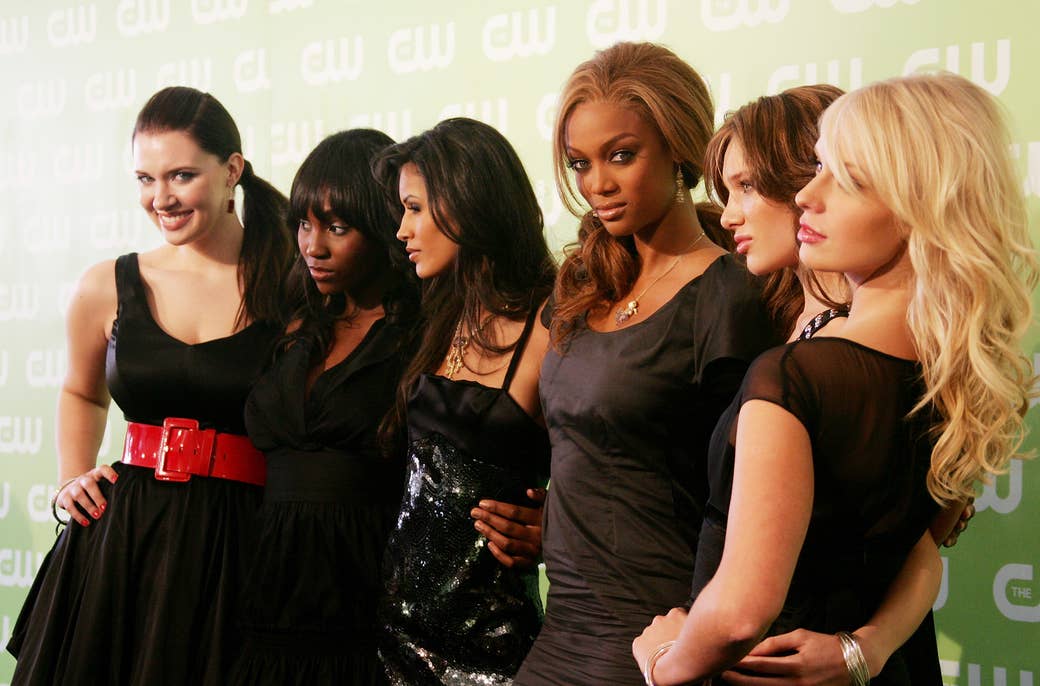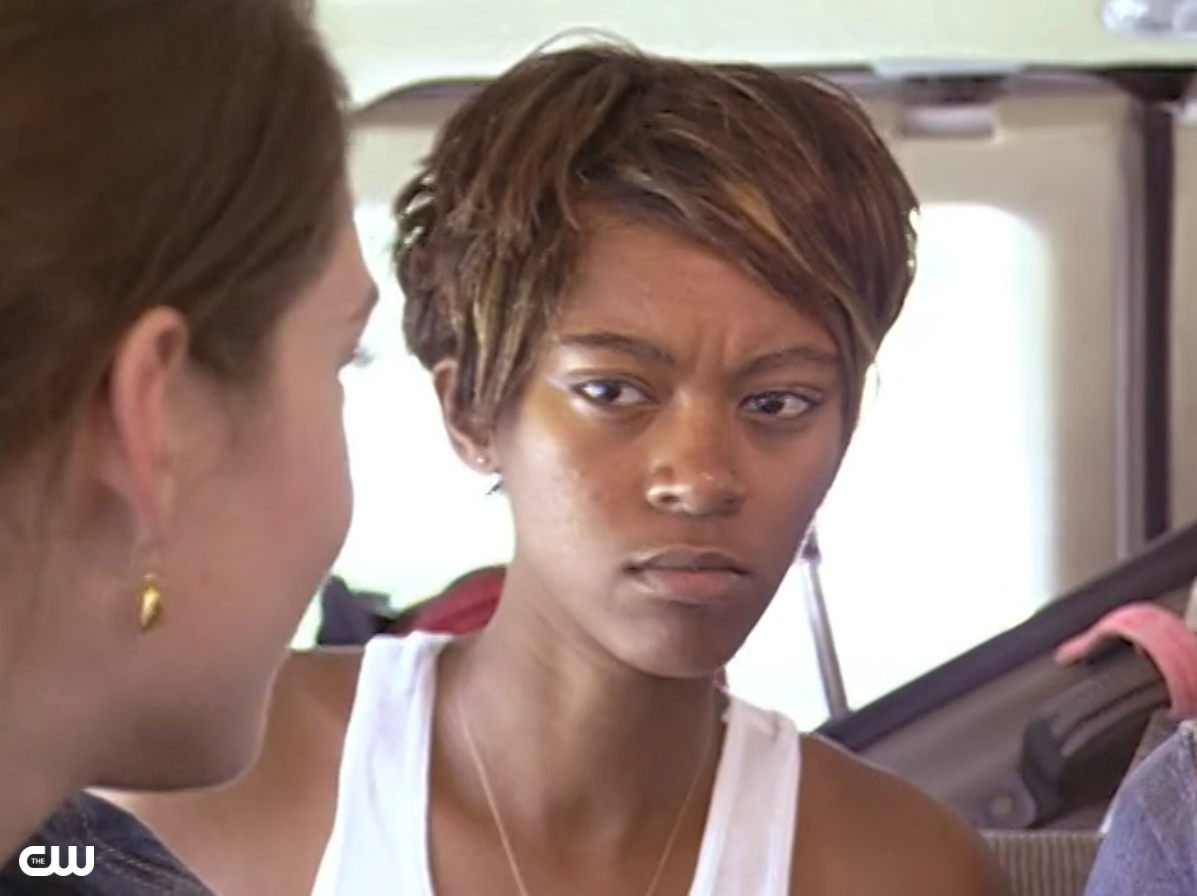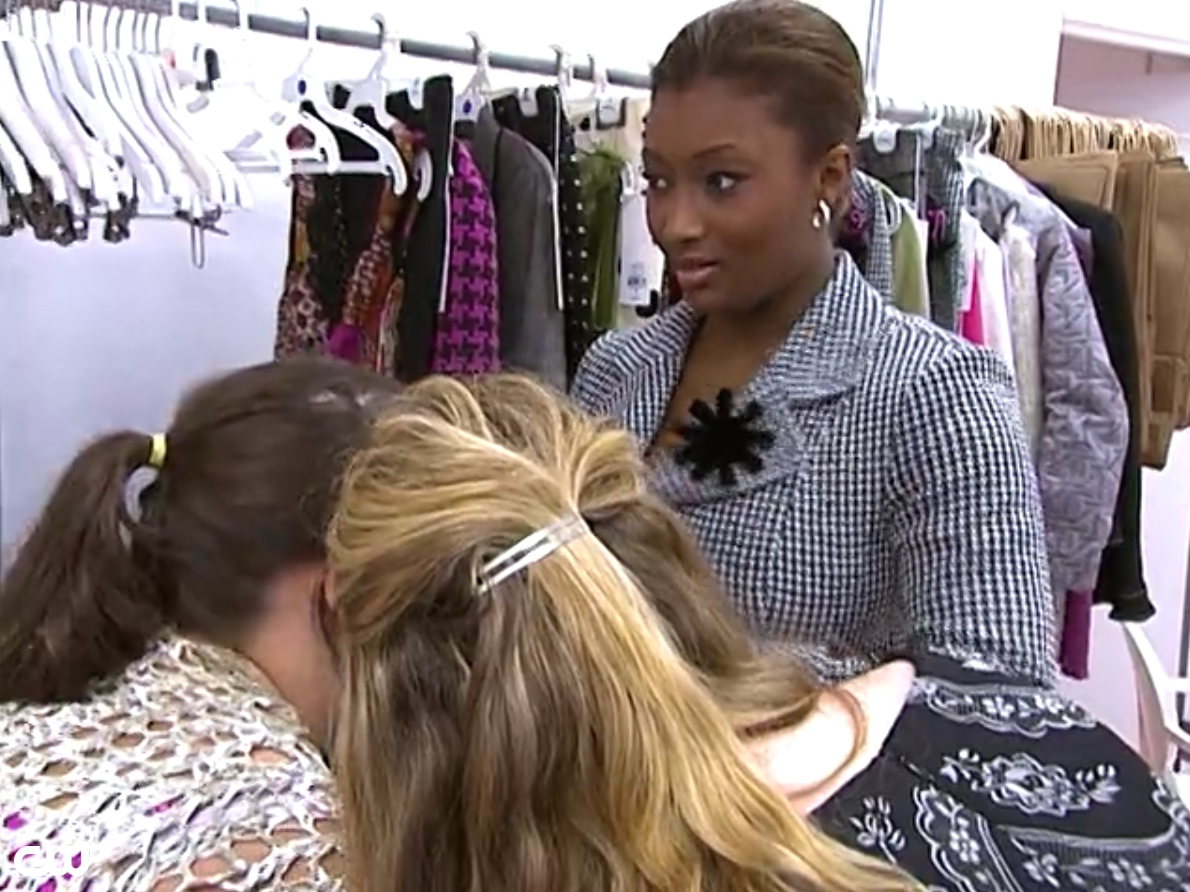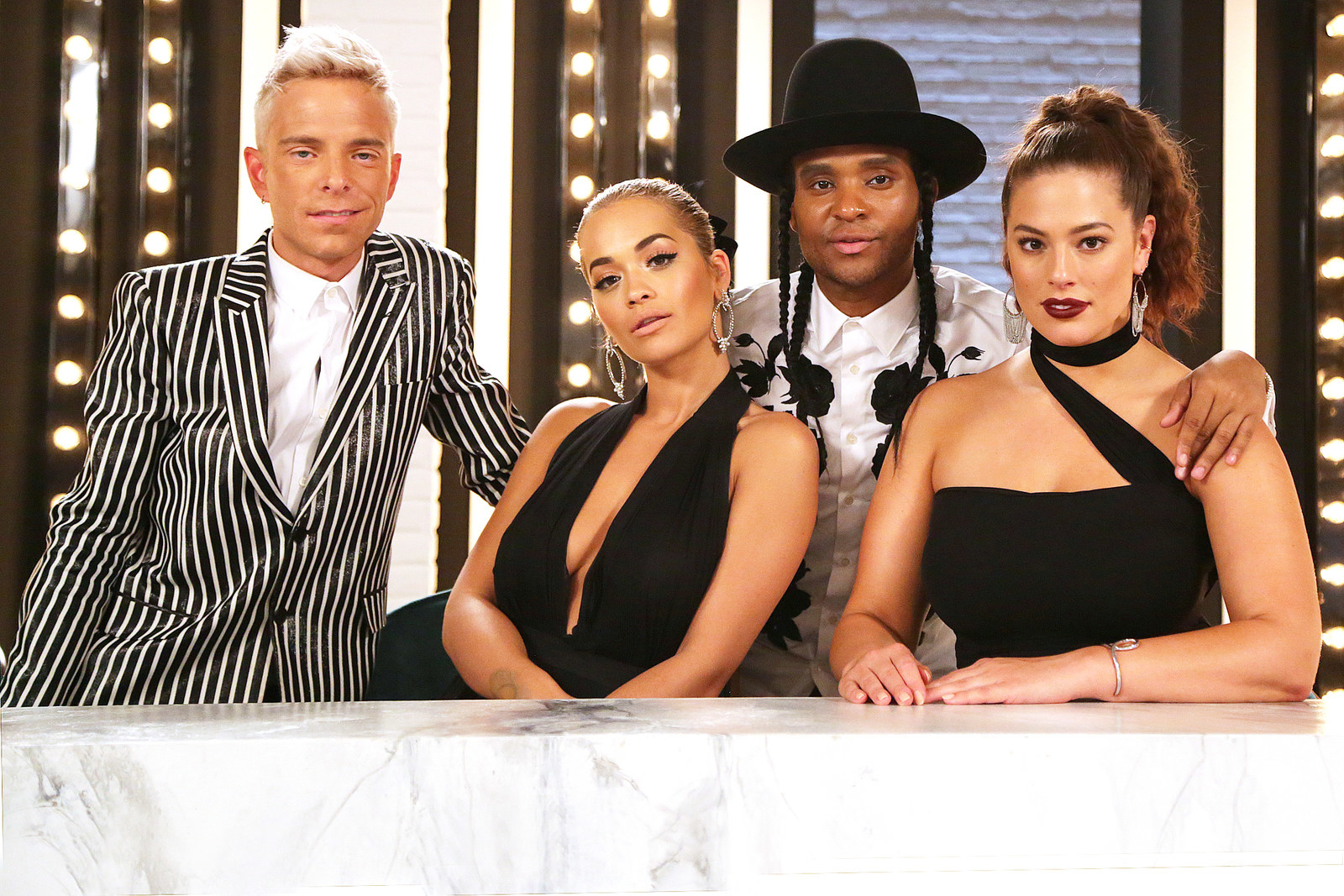
In the third episode of the first cycle of America’s Next Top Model, in 2003, host Tyra Banks outlined the strengths and weaknesses of that week’s bottom two contestants, Ebony and Nicole. Ebony, a Harlem native with a deep complexion to match her name, needed to work on her skin, which had required extensive retouching in that week’s photo shoot. But Tyra framed her critique of Ebony in a very particular way. “The color of your skin is so beautiful,” Tyra said emphatically, before lambasting the uneven texture of that skin.
Ebony was spared the axe for another week and her resolve to improve her skin became a driving plot point. “I’ll work on it,” she told the cameras. “It will be flawless.” This was over a decade before Lupita Nyong’o became a fashion icon or Maria Borges made headlines for wearing a short fro on the Victoria’s Secret runway. It needed to be stated that Ebony’s skin tone was beautiful, because dark-skinned models with natural hair were even more invisible in fashion then than they are now. And Tyra, or at least some Top Model producer, had to have been aware that devoting a whole subplot to Ebony’s skin problems could easily be construed as contributing to that colorism. It was classic Top Model, before it devolved into pure gimmick and, this year, got a reboot with Rita Ora as host: an intersection of racial identity and beauty, woven seamlessly into high reality-TV melodrama.
Thirteen years later, Top Model has been given a second chance at life; after being canceled by The CW in 2015, the show is back on for its 23rd cycle with a new look and a new home on VH1. Looking at the more recent seasons, it’d be easy to place Top Model at the vapid, lowbrow end of the reality TV spectrum. But that would gloss over the radical approach the producers took, early on, to making identity politics and a diverse cast an integral component of the show.
It’s not surprising, given Tyra’s own experience as a black supermodel in a very white industry in the ‘90s, that the representation of black women in fashion was an especially prominent theme on Top Model. But the show also addressed what it might mean for a model to be Asian-American, openly gay, a devout Christian, plus-sized, transgender, or chronically ill, long before conversations around those identities found their way into the mainstream culture and politics of 2016.
Of course, while many early episodes of Top Model gave contestants a platform to share their marginalized identities, it also exploited them in uncomfortable ways, and often ultimately hewed to the fashion industry’s rail-thin confines. But in the big picture, Top Model’s commitment to putting women of diverse backgrounds on television predated today’s TV landscape, in which critics and audiences demand (and have at least started to get) more representation onscreen — even as the cheap tarnish of girly reality TV kept Top Model from ever getting much in the way of critical praise or attention.
It’s fitting that America’s Next Top Model is back on air in a year in which America is visibly struggling to agree on (or even civilly talk about) how much we should or shouldn’t put our race, our gender, our sexuality, or our religion at the forefront of the conversation. But does the show still have something important to say?
The original Top Model undoubtedly favored blunt labels over colorblindness. “The fashion industry is all about race,” Tyra told April, a half-Japanese, half-white contestant from the show's Cycle 2, whose struggle to come to terms with her Asian heritage formed the basis of her arc on the show. “If you enter in this fashion world, you would be the underdog.” Drawing from her own experience, Tyra openly proclaimed that if you didn’t conform to white, mainstream beauty, you were going to have to work harder to achieve the same success — a stance that apparently is still quite controversial among many white people.

It was a radical move, especially compared to other reality shows with a similar format at the time. The Bachelor, which also has a cast made up of young, physically attractive women, premiered in 2002, just a year before Top Model. In 2012, it faced a class-action lawsuit for refusing to cast people of color, and by 2015 was still “embarrassingly white.” At a time when shows like Survivor or The Apprentice were still struggling to portray women of color outside of the “angry black woman” trope, Top Model was already recognizing those stereotypes as problematic, if not quite deconstructing them. “I don’t want to cast another black bitch,” Tyra said to Cycle 3’s Eva, who walked into her audition talking smack about anybody and everybody. “You are not gonna make me the angry black woman,” Furonda tells the camera in a 2006 episode, after a confrontation with Dani, a contestant who spouted many racist, anti-Muslim, and homophobic views during her brief appearance on the show.
Survivor creator Mark Burnett refused to address the lack of diversity on his show until, in its 13th season, Survivor pitted four tribes of four different races against each other — a move which only illuminated how poorly-equipped the show’s white producers were to engage with race in a meaningful way. Meanwhile, on the very first episode of Top Model, Tyra had no qualms about implying that she cast Giselle because of her ethnicity. “I love the fact that she’s a Latina woman,” Tyra said. “That was very important to me.” Accusations of tokenism be damned, Tyra was going to make the show she envisioned.
Those casting decisions not only gave Tyra a nice platform on which to sell her vision of beauty, they also made for some explosive conflicts between girls of different backgrounds. In Cycle 1, Ebony's girlfriend was allowed to casually drop by the house for a visit — something totally out of step in the reality competition genre where contact with loved ones is restricted to tearful phone calls and dramatic reunions. The incident escalated the already tense relationship between proselytizing Christians Robin and Shannon and the rest of the house. After making their discomfort with homosexuality clear, Robin and Shannon hid in their room and read the Bible while Ebony introduced her girlfriend to the other contestants.
Top Model had always cast gay and bisexual contestants, and it finally opened the doors to trans women in 2008 (Cycle 11) when it cast Isis, who described herself as “born in the wrong body.” More than one girl snickered and sneered at the idea of a transgender contestant, including fellow wannabe model Clark, who referred to Isis as a “he-she.” But in allowing Isis to share her story in non-sensationalistic terms, showing her struggle to give herself hormone injections or feel comfortable in a bikini, Top Model allowed Clark’s intolerance to speak for itself — six years before Transparent debuted on Amazon, and seven years before Caitlyn Jenner came out as trans.
And yet Tyra, and by extension Top Model, chafed when the contestants’ feelings about their own identities didn’t match the narrative the producers wanted to tell. Take Cycle 6’s Gina, who was given the dimwitted edit for failing to wave the flag for Asian-American girls everywhere, and antagonized by fellow contestant Jade (a self-described “biracial butterfly” who felt her confidence in her mixed heritage made her superior to Gina) before getting eliminated in Episode 5. Gina wasn’t the sharpest in the bunch, but the girl had a lot to unpack. In the first 30 seconds of her appearance on Top Model, she addressed the paucity of Asian models in fashion, how her American upbringing was at odds with her Korean parents’ conservatism, and her disinterest in Asian men because they were too short. She may not have addressed those issues with the articulation or insight of Margaret Cho or Fresh Off the Boat, but her ambivalence toward her culture also shows why demanding that a 21-year-old aspiring model represent her entire race is such an absurd request in the first place.
There was also Yaya and the Hat. Cycle 3’s Yaya, the Ivy League–educated daughter of a Yoruba priest who wished to represent “a beauty that is black,” earned praise for her intelligence and her confidence in keeping her hair natural. Midway through the season, however, she butted heads with stylist and guest judge Rebecca Weinberg, who found Yaya’s “Africanness” overbearing. A challenge asked the girls to style an outfit around one of five hats, and included a stereotypical African cap in the lineup. Yaya didn’t take the bait, calling the hat cheap and made of “fake kente” cloth, a stance the judging panel found disrespectful. Even while Tyra wore an Afro in place of her usual weave, and shot Rebecca Weinberg an icy look, she still scolded Yaya for her condescending tone: “You need apologize to the fake kente cloth African hat.” The ostensible lesson was that Yaya needed to learn to be more versatile and more marketable — a coded way of saying “Be black, but not in a way that makes white people uncomfortable.”

No show about modeling could ignore weight, and while Top Model was astute in recognizing the challenges plus-size models faced and the pressure the fashion industry put on all women to be thin, it didn’t do much to dispute those constraints. The judges applauded Cycle 3’s Toccara for her confidence and her aspiration to be the first black plus-size supermodel, while she was regularly harangued for not fitting into clothes. Designer Nanette Lepore looked dismayed as Toccara’s chest nearly burst out of the jacket they’d given her to wear at a go-see appointment. “And that would be the biggest size we cut. What are you going to do?” she sighed. (I don’t know, cut a bigger size?)
In other words, Top Model exposed fashion’s fat phobia for what it was, but went along with it anyway. “It’s almost like being a plus-size girl is even harder than being a black girl. You gotta be bubblier than them, you gotta be more lovable, your pictures gotta be better, to get the same thing that the skinny girls behind you are getting,” Tyra said to Cycle 5’s plus-size contestant Diane — right before eliminating her for not being bubbly enough.
Ironically, Top Model’s insistence on including plus-size models from the start has given today’s viewers the ammo they needed to criticize the show’s reboot for failing to meet that standard this time around. Following the premiere of Cycle 23, many viewers expressed their disappointment with the lack of any plus-size contestants among the 14 finalists. Having plus-size model Ashley Graham on the judging panel isn’t enough if the show isn’t actually going to give girls of different shapes and sizes a chance to compete.
Lack of body diversity aside, the first episode of the rebooted Top Model brought back many other familiar tropes — mean designers; a bunch of girls arguing in a limo; twins. Rita Ora hasn’t positioned herself as the sun around which the show revolves the way Tyra (who is still the show’s executive producer) did in her hosting duties. But she did go in for a tried-and-true Tyra tactic in using her own past to relate to one of the girl’s difficult childhoods: Rita described how she left her war-torn home for London at a young age, but she referred to her place of birth (Kosovo) only as “my country,” a weird obfuscation totally at odds with Tyra’s cultural specificity. How many times, after all, did Tyra remind us of her Inglewood roots?

An emphasis on branding, on Instagram followers, and the ability to be everything to everyone (as opposed to inhabiting and representing a specific culture), is very much Rita Ora’s style. In Rita’s world, ethnic hairstyles are a prop to be taken on and off, just another aspect of her brand that, like her job title, is mutable to whatever’s trendy at the moment. And that may be this new cycle’s style as well. Top Model has a slightly more sophisticated vocabulary now than it did in 2003 — for example, Cycle 23 also welcomed Kyle, who identifies as genderqueer — but the continuing backlash against identity politics in the larger cultural context right now might easily make the show more gun-shy in confronting issues of race or sexuality or religion with the frankness it did in earlier cycles.
One thing that has changed definitively since Top Model’s debut is that the stigma of reality TV has worn away. Those “social media models” the show obliquely referenced in Cycle 23’s premiere, women like Gigi Hadid and Kendall Jenner, wouldn’t be snagging Vogue covers if it weren’t for their mothers’ and sisters’ reality TV stardom. It’s tough to say how much Top Model contributed in that regard, as it has produced so few working models, but its cultural contributions can be felt in other ways.
In addition to teaching us all how to smize and not rest on pretty, the show trained a generation of viewers to expect diversity onscreen. For years, Top Model managed to put forth conversations about race, gender, and sexuality, illuminating the complexity of those issues just as often as it exploited them. This year, as the show’s longtime sponsor, CoverGirl cast male and hijabi faces in campaigns for the first time, those conversations are finally appearing not just in more TV shows, but also in mainstream American culture as a whole — even as the newest version of Top Model might choose to leave them behind.
Emily Jensen is a freelance writer and editor based in Rio de Janeiro. She was previously the editor of Time Out Buenos Aires and has written for publications such as Racked, Refinery29, and Paste.
Want more of the best in cultural criticism, literary arts, and personal essays? Sign up for BuzzFeed Reader’s newsletter!
If you can't see the signup box above, just go here to sign up for BuzzFeed Reader's newsletter!
CORRECTION
Rita Ora was born in Kosovo (formerly SFR Yugoslavia). An earlier version of this post misstated the country.
